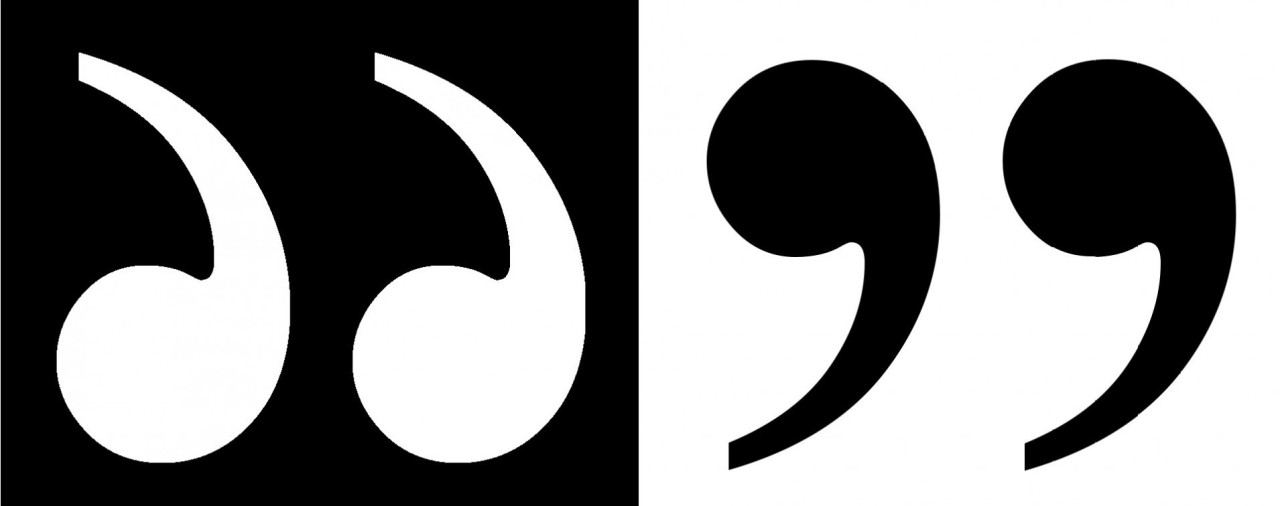
Should You Use Single or Double Quotation Marks?
There are two kinds of people in this world: those who use ‘single inverted commas’ for quotes and those who use “double quotation marks”. Well, there are also people who use both depending on the context. But that makes for a less snappy introductory sentence.
The point is that there are two main styles of marking quotations in writing. So, how do you know which to use? The basic rule is that UK English uses single inverted commas and US English uses double quotation marks. But there’s plenty of room for variation here.
In this post, I’ll set out some of the key conventions on how to use quotation marks.
Quotations Marks in British and US English
The standard rule for quotation marks in British English is to use single inverted commas for quotations, with double quote marks reserves for quotes within quotes:
The report says that prices have ‘increased rapidly since 2008’.
The witness said, ‘He told us that he was “a god among men” and then exploded.’
Here, we use double quotation marks for “a god among men” because the witness is relating a quote from someone else (i.e. we’re dealing with a quote within a quote). These same conventions typically apply in similar dialects, such as Australian and New Zealand English.
In US English, the inverse is true. This means North American writers tend to favour double quotations marks, with inverted commas reserved for quotes within quotes:
The report says that prices have “increased rapidly since 2008.”
The witness said, “He told us that he was ‘a god among men’ and then exploded.”
The other main difference between UK and US English is that US English always places commas and full stops inside closing quote marks, whereas UK English only does this when the punctuation is part of the original quotation (as illustrated in the “report” examples above). But we won’t get distracted by other punctuation rules here!
Style Guides and Variations
Okay, so the “rule” above reflects broad trends in how quotes are presented in UK and US English. Most style guides broadly follow these conventions, too.
For instance US style guides such as The Chicago Manual of Style and the APA Publication Manual favour double quotation marks. And UK organisations such as the MHRA and OUP tend to recommend single inverted commas.
However, there is plenty of variation out there if you look closely!
Most UK news organisations, for instance, use double quote marks as the default for quotations in the body of a story. You can see this set out in the BBC and Guardian style guides. Oddly, though, UK news organisations (including the BBC and Guardian) also tend to use single quotation marks for quotes in headlines and captions. The correct punctuation style in these publications therefore depends on the context.

Some style guides recommend even more esoteric usages.
For example, the UK government says to use double quote marks for direct quotations (following the US convention despite using UK English otherwise). But it also says to use inverted commas for other usages, including “unusual terms”. What qualifies as an “unusual” term in this context isn’t entirely clear. But the UK government makes its own rules about quotation mark usage (much like it does for the border with Ireland).
More broadly, the exceptions above show that it’s usually a good idea to check your style guide (if you have one) for advice on how to use quotations marks.
Which Style Is Best?
Typically, with quotation marks, you should go with whatever your style guide suggests. And if you’re not using a style guide, it’s a matter of preference.
You can follow the convention of using single quote marks in British English and double in US English if you like – and it should be noted that single quote marks might look unusual to a US audience – but it’s ultimately a stylistic choice.
As you may have noticed while reading this post, my preference is for double quote marks (even though I stick to UK English conventions otherwise). If nothing else, double quote marks are more visually distinct from apostrophes, which makes them a tiny bit easier to parse at a glance. But this is a very marginal thing, so it really doesn’t matter too much.
The main thing is consistency: don’t switch between single and double quote marks arbitrarily. And if you’re using both in different ways, make sure the usage is clear.
"I exclusively use double quotation marks, unless there is 'a quote within a quote' to be included. In that case, I'll make an exception and use the single inverted comma, as well."
Copy Lead at Zepz | Advertising & Marketing Copywriter
1yI'm an American writer based out of the UK, and I use single quotes if other parts of the style guides favour UK spellings, etc. In my own writing, like you, I find doubles easier to parse.